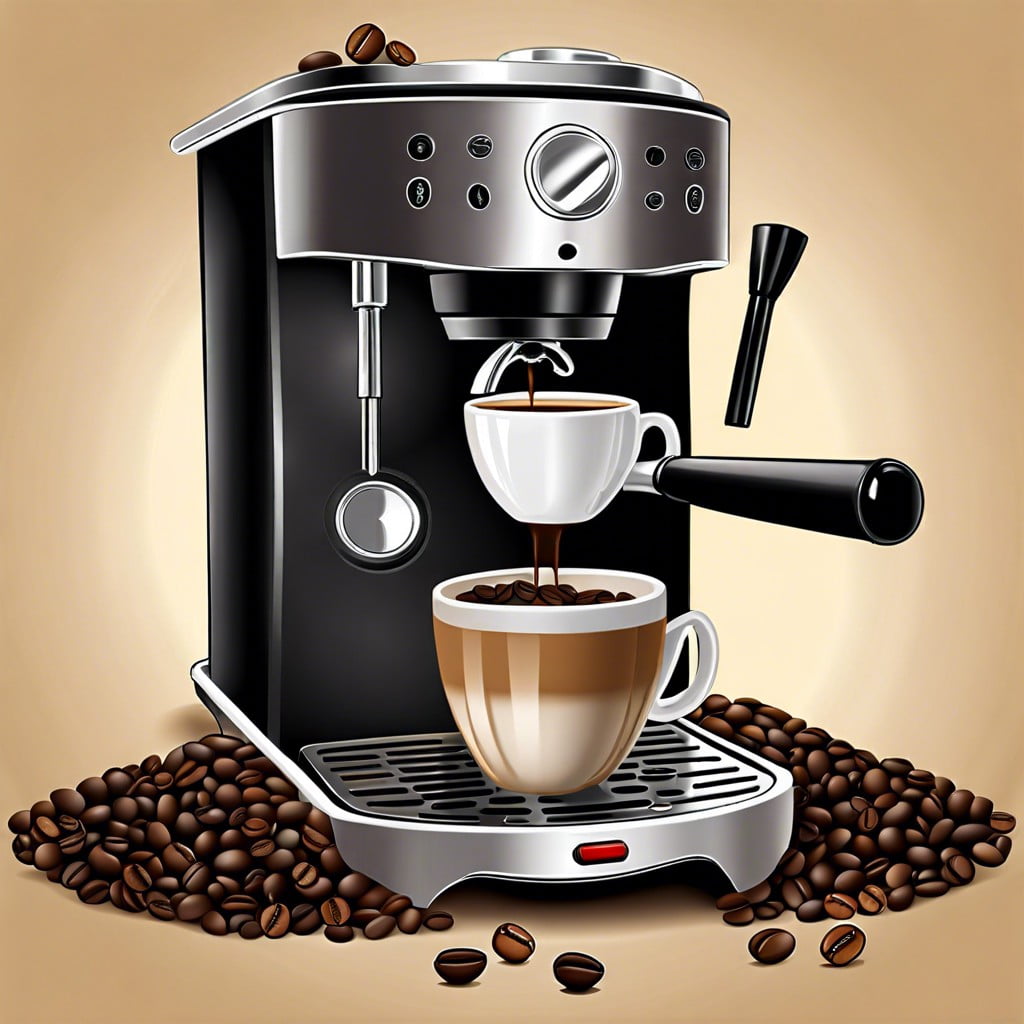This article uncovers the diverse factors that determine caffeine content in a cup of coffee, equipping you with the knowledge to gauge your intake.
Factors That Affect Caffeine Content in Coffee

The caffeine content in a cup of coffee isn’t a fixed number and can be influenced by various factors including the type of coffee bean, the roast level, the brewing method and duration, and the serving size.
Robusta beans typically contain nearly twice the caffeine of Arabica beans. Considering most specialty coffees are Arabica, while many instant and espresso blends contain Robusta, the choice directly impacts caffeine levels.
Darker roasts are often misconceived as having higher caffeine, but the roasting process actually degrades some caffeine. Lighter roasts may retain more, albeit the difference is minimal and often imperceptible in taste.
Brewing parameters play a significant role. Finer grinds and longer brewing times, as in French press or cold brew methods, result in higher caffeine extraction. On the flip side, espresso, despite its intense taste, contains less caffeine per ounce, due to its quick extraction.
Finally, serving sizes vary dramatically from the traditional espresso shot to a venti drip coffee. The larger the serving, the more caffeine, though this is not a strict volume-to-caffeine ratio due to the above factors.
Understanding these variables can help you control your caffeine intake and tailor your coffee to your preferences.
Average Caffeine Content in Different Types of Coffee
The caffeine content in coffee varies depending on the type of coffee bean, roast level, and preparation method. Here’s a general guide:
- A standard 8-ounce (240-milliliter) cup of brewed coffee contains approximately 95 mg of caffeine.
- Espresso, due to its concentrated nature, offers around 63 mg of caffeine in a 1-ounce (30-milliliter) shot.
- Instant coffee often contains less caffeine, with an average of 60 mg per 8-ounce serving.
- Decaffeinated coffee is not caffeine-free, typically holding about 2 to 5 mg per 8-ounce cup.
- Cold brew coffee, made with a higher coffee-to-water ratio, can contain more caffeine, sometimes as high as 200 mg per 8-ounce serving.
Remember, the specific coffee bean origin and the brewing time will also impact the final caffeine content. Light roasts can retain more caffeine than dark roasts, despite a common misconception that the intense flavor of dark roasts indicates higher caffeine. The longer coffee grounds are in contact with water, the more caffeine will be extracted, affecting the drink’s potency.
Health Recommendations for Caffeine Intake
Most health organizations suggest that adults can safely consume up to 400 milligrams of caffeine per day—roughly the amount in four 8-ounce cups of brewed coffee. Pregnant individuals should limit their intake to about 200 milligrams daily to avoid potential risks to the fetus.
Individual responses to caffeine vary, with factors like body weight, medications, and individual sensitivity playing roles. Regular consumption can lead to tolerance, reducing effects over time. It’s important to listen to your body and adjust accordingly.
For children and adolescents, caffeine intake is recommended to be much lower—most guidelines advise against the consumption of caffeinated beverages for children. Adolescents should limit their intake to no more than 100 milligrams of caffeine daily, equivalent to about one cup of coffee.
Excessive consumption can lead to side effects, including jitteriness, insomnia, an elevated heart rate, and anxiety. Balance and moderation are key, as is paying attention to other sources of caffeine, like tea, chocolate, and certain medications.
Tracking caffeine intake from all sources will provide a clearer picture and help in staying within the recommended limits. Hydration should be maintained, as caffeine has diuretic properties, and water is essential for offsetting this effect.
Caffeine Sensitivity and Personal Tolerance
Caffeine’s effects vary greatly from one individual to another, influenced by both genetics and habitual consumption. Some people experience jitters and anxiety with just a small amount of caffeine, whereas others may drink several cups of coffee without noticeable effects.
Key factors include metabolic rate and the effectiveness of the liver enzymes responsible for caffeine breakdown. A fast metabolism will reduce the impact and duration of caffeine’s effects, while a slower one will prolong them.
Hormones also play a role; for example, oral contraceptives can slow the rate at which caffeine is metabolized. Additionally, pregnant individuals should limit their caffeine intake as it metabolizes slower during pregnancy.
Regular consumption can lead to a higher tolerance, necessitating larger amounts of caffeine to achieve the same level of alertness. Conversely, those who seldom consume caffeine may find themselves more sensitive to its effects.
Awareness of one’s personal tolerance is essential for moderating caffeine intake to avoid negative side effects while enjoying the benefits of alertness and improved concentration that coffee can offer.
Understanding Caffeine Labels and Measurements
Interpreting caffeine content on coffee labels requires familiarity with certain units of measurement. A milligram (mg) is the standard unit for caffeine content. When examining labels, you’ll often see caffeine content listed per serving size, which can vary between products. Hence, it’s crucial to note the serving size to which the caffeine content corresponds.
Specialty coffee consumed at cafes might not always provide such detailed information. In these instances, consider the type of bean, roast level, and brewing method as they all influence the final caffeine content. Arabica beans typically contain less caffeine compared to Robusta beans. Lighter roasts may have slightly more caffeine than darker roasts due to the longer roasting process reducing caffeine levels marginally.
For brewed coffee, the industry standard serving size is 8 ounces (oz), and this is what is often used when stating average caffeine content. For espresso, a 1-ounce shot is standard. When comparing caffeine content, always check if the reference is to brewed coffee or espresso, as espresso is more concentrated.
Remember that decaffeinated coffee is not caffeine-free. It still contains a minimal amount of caffeine, usually about 2 to 5 mg per 8 oz cup, which can be pertinent information for those closely monitoring their caffeine intake.